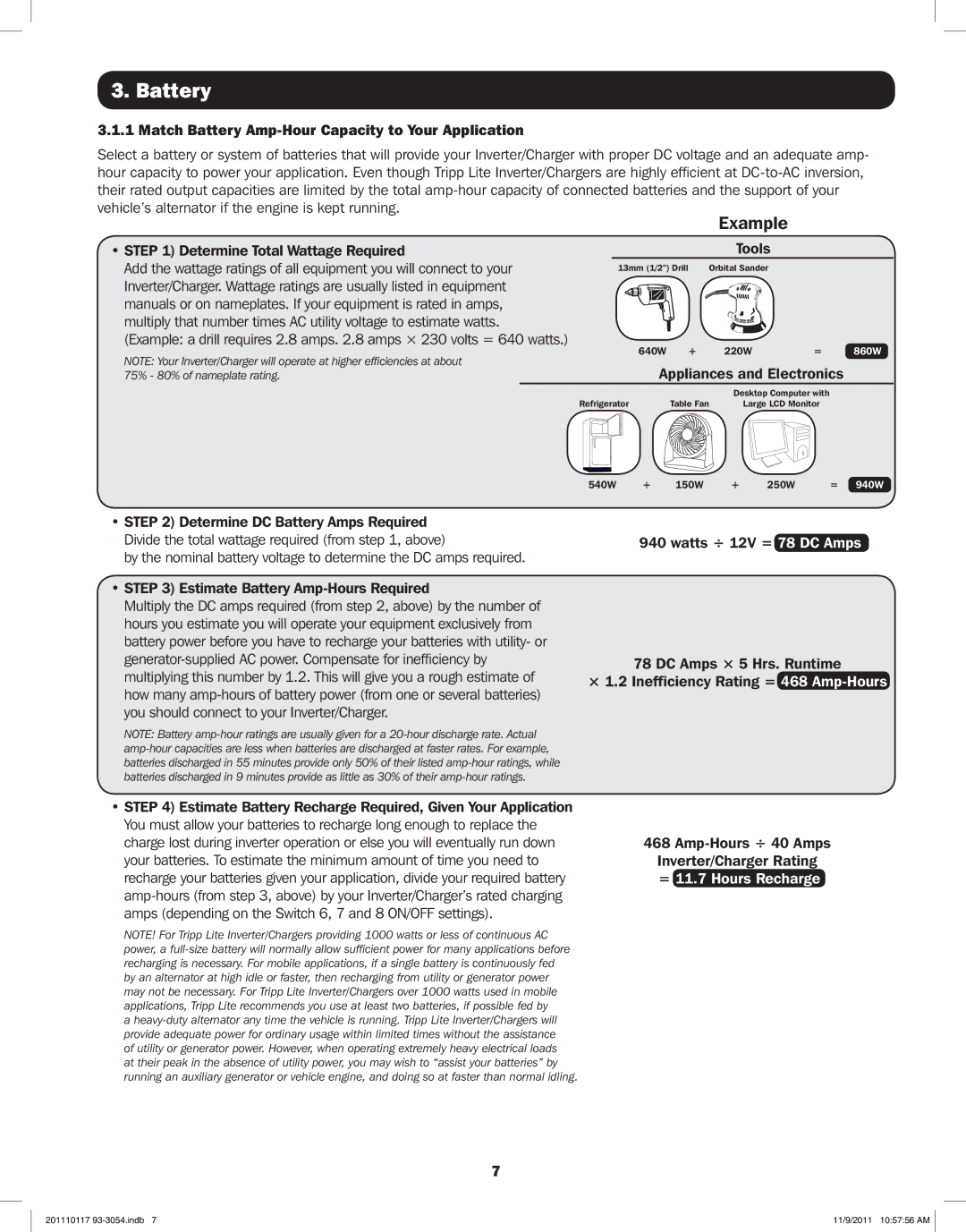APSX2012SW, APSX1012SW specifications
The Tripp Lite APSX2012SW and APSX1012SW are cutting-edge power inverters designed for a variety of applications, particularly in environments where reliable power is critical. These devices convert DC power from a battery into AC power, enabling users to operate standard appliances and devices when access to traditional electrical outlets is limited.One of the main features of the APSX2012SW is its 2000 watt continuous power output, with a surge capacity of up to 4000 watts, making it suitable for powering larger devices, including refrigerators and power tools. The APSX1012SW, on the other hand, delivers 1000 watts of continuous power with a surge capability of 2000 watts. These specifications ensure that users can run essential equipment seamlessly during emergencies or while camping.
Both models come equipped with built-in safety features to safeguard against overloading and overheating. The automatic shutdown feature protects the inverter and connected devices from damage, ensuring long-lasting performance. Additionally, the inverters include a cooling fan that activates only when necessary, minimizing noise while maintaining optimal operating temperatures.
Another noteworthy characteristic of the APSX series is its high-efficiency performance, reaching up to 90 percent efficiency under optimal conditions. This not only extends the operational life of your battery but also helps in conserving energy, making these inverters eco-friendly choices. Users will appreciate the inclusion of multiple outlets, useful for powering multiple devices simultaneously, and the inclusion of USB charging ports adds versatility for charging mobile devices.
The robust design of the APSX2012SW and APSX1012SW ensures durability in rugged environments. Their compact construction allows for easy transportation, making them ideal for outdoor activities, road trips, or in case of power outages at home. Both models also feature an LED display that provides vital information regarding battery status and output levels, helping users monitor system performance effectively.
In conclusion, the Tripp Lite APSX2012SW and APSX1012SW power inverters stand out for their reliable performance, advanced safety features, and user-friendly design. Whether for camping, tailgating, or emergency situations, these inverters provide the perfect solution for anyone in need of portable power. Choose Tripp Lite for durable, efficient, and dependable power conversion solutions.

